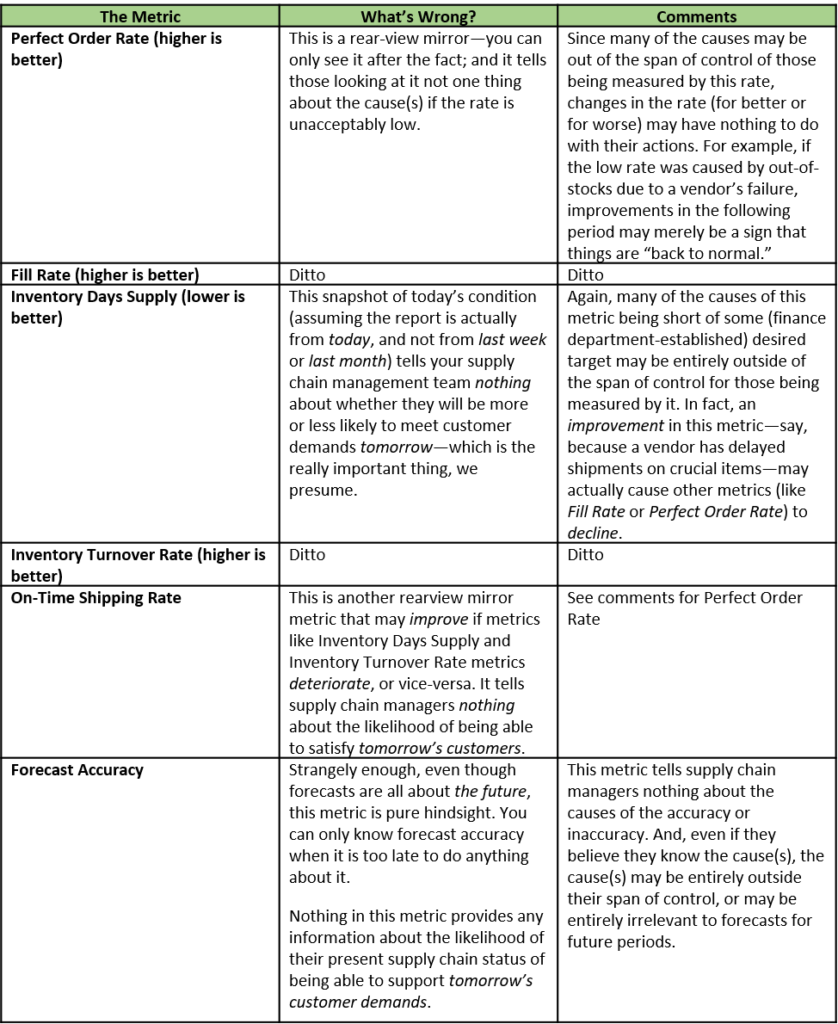In this article, I’d like to discuss my view of some common supply chain metrics, and their weaknesses. The important metrics should be about meeting tomorrow’s customer demands, not what happened yesterday and we can do nothing about it.

What Your Supply Chain Managers Really Need to Know
Three system-wide metrics tell you everything your supply chain managers and C-suite executives need to know about the performance of your supply chain:
- Return on Investment
- On-time performance
- Enterprise efficiency (total throughput* / total operating expenses)
* Here we define Throughput narrowly to mean revenues less only truly-variable costs. Everything outside of truly-variable costs ends up in operating expenses.
What your supply chain managers really need to know is this:
How likely is each strategic buffer likely to support actual customer demand tomorrow?
Strategic buffers may be of three different types:
- Stock buffers (inventory)
- Time buffers
- Capacity buffers
Any given stock buffer’s likelihood to protect FLOW—that is, support actual customer demand—may be summarized in two pieces of data:
- A color: RED, YELLOW or GREEN
- A number stated as a percent (percent of buffer remaining)
Actions and priorities are determined by two simple rules:
- RED before YELLOW (green-zone items don’t presently need attention)
- Lower percent buffer status before higher percent buffer status
All Else Being Equal
Everything else being equal, and assuming that buffers have been strategically sized, strategically placed (there are simple rules for doing so), and dynamically maintained, then strict adherence the action and priority rules established around buffers will lead to on-time performance improvement and return on investment increases as throughput grows without dramatic increases in operating expenses.
If Your Supply Chain Metrics Aren’t This Simple
If your supply chain metrics aren’t this simple, ask yourself, “Why not?” Red more supply chain blogs:
Advanced Planning and Scheduling Systems
The Most Powerful Supply Chain Management System




